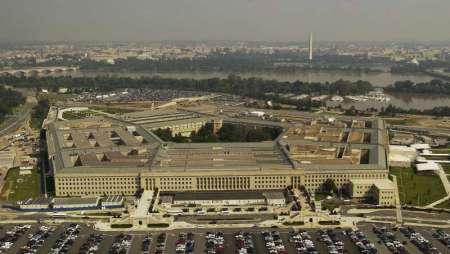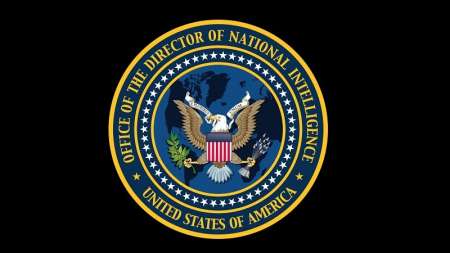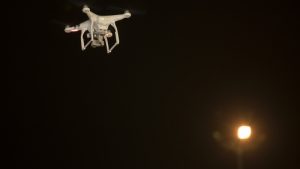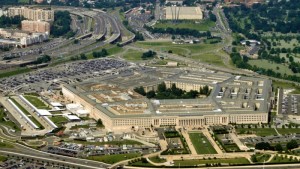An official from the Department of Defense’s (DoD) Defense Innovation Unit (DIU) announced that, as of today, the DIU is on contract to launch its new Digital OnRamp platform this fall. […]
The Department of Defense is developing a “data dictionary” that aims to enable seamless interoperability without changing existing workflows that will be piloted at the end of this year. […]
Nand Mulchandani has stepped down from his role as chief technology officer (CTO) of the Central Intelligence Agency (CIA), marking the end of a six-year run in public service. […]
President Donald Trump has nominated James Caggy to serve as assistant secretary of defense for mission capabilities, as the administration moves to fill key roles in the Pentagon’s research and engineering (R&E) directorate. […]
After nearly three decades of Federal service, Winston Beauchamp said he is stepping down from his position at the Department of the Air Force and retiring from active Federal duty. […]
The Space Development Agency (SDA) announced on Tuesday that it has selected Gurpartap “GP” Sandhoo to serve as the agency’s new deputy director. […]
The U.S. Space Force has awarded Boeing a $2.4 billion contract to build up to four new satellites as part of an effort to modernize space-based nuclear command, control and communications (NC3) capabilities, Space Systems Command (SSC) announced July 3. […]
The Department of Defense’s (DoD) Chief Digital and Artificial Intelligence Office (CDAO) plans to eliminate its chief technology officer (CTO) role and directorate as part of the Trump administration’s broader efficiency efforts in the fiscal year (FY) 2026 budget. […]
A Federal judge has extended a temporary restraining order (TRO) for two additional weeks in a lawsuit brought by a coalition of major research universities against the U.S. Department of Defense (DoD). […]
Army Chief Information Officer (CIO) Leonel T. Garciga has ordered all new Army cloud procurements to route through the Pentagon’s Joint Warfighting Cloud Capability (JWCC) contract, streamlining acquisitions under a single enterprise-wide vehicle, according to a June 30 memorandum. […]
A top political action committee (PAC) has asked that the Department of Defense (DoD) open an investigation into whether recent U.S. Army recruits hailing from leadership roles in industry pose any conflict of interest in military operations. […]
Sen. Tom Cotton, R-Ark., has introduced legislation to overhaul the Office of the Director of National Intelligence (ODNI), reduce its size, and refocus its role within the U.S. intelligence community. […]
The Department of Defense (DoD) plans to establish a new joint interagency task force to confront the growing threats of unmanned aerial vehicles (UAVs) — more commonly known as drones. […]
The U.S. Space Force has delayed the inaugural launch of its next-generation missile warning satellites in medium-Earth orbit (MEO) from late 2026 to spring 2027, citing supply chain delays and technical hurdles, a senior official confirmed this week. […]
The U.S. Navy’s Fleet Numerical Meteorology and Oceanography Center (FNMOC) will stop processing and distributing data by the end of July from a decades-old military weather satellite program that has provided crucial environmental intelligence, a spokesperson confirmed to MeriTalk. […]
The future of one of the Space Development Agency’s (SDA) flagship satellite constellations is in limbo as the Department of Defense (DoD) weighs whether to replace the planned Tranche 3 Transport Layer with commercial satellite communications solutions. […]
The U.S. Army has announced new leadership at its Program Executive Office for Intelligence, Electronic Warfare and Sensors (PEO IEW&S) – an office that delivers critical technologies to the Army to “outpace the threat.” […]
The U.S. Cyber Command has appointed Patrick Ware as its new executive director – which is the organization’s highest-ranking civilian position and the number three position overall in its command structure. […]
The Defense Department’s (DoD) undersecretary for acquisition and sustainment has issued a set of rules to implement a policy announced by Defense Secretary Pete Hegseth in May that limits the agency’s use of IT consulting contracts in order to reduce reliance on outside firms and bolster the department’s in-house expertise. […]
President Donald Trump’s nominee to head the National Counterintelligence and Security Center (NCSC) is sounding the alarm on drones and non-traditional intelligence tactics as the most urgent – and most overlooked – threats to the U.S. intelligence community. […]
Morgan Adamski, who has been executive director at U.S. Cyber Command since June 2024, said today she is leaving the organization to embark on a “new adventure.” […]
The Department of Defense (DoD) is looking for input from industry on its plans to “blow up” the agency’s Risk Management Framework (RMF) while switching to a real-time cybersecurity posture. […]
The first of 12 planned military satellites is now fully operational within less than a week of its launch, a top Space Development Agency (SDA) official announced today after he said the defense agency sent the spacecraft, dubbed Dragoon, into orbit on Monday. […]
Two of the Trump administration’s nominees to serve in key tech-related roles at the Department of Defense (DoD) told lawmakers during their nomination hearing on Thursday that they plan to speed acquisitions in emerging capabilities areas such as artificial intelligence, microelectronics, and quantum science, among others. […]
Senior Pentagon officials today unveiled a detailed breakdown of President Trump’s fiscal year (FY) 2026 Department of Defense (DoD) budget request that totals $1.01 trillion and includes major investments in cybersecurity, artificial intelligence (AI), and space-based capabilities. […]
The Defense Advanced Research Projects Agency (DARPA) is pushing the boundaries of quantum sensing technology, seeking to rapidly transform quantum sensing from a scientific curiosity into a game-changing, field-ready capability for modern threat detection. […]
The Department of the Navy (DON) released a new memo detailing its top five technology priorities for future investment, and is placing artificial intelligence (AI) and quantum technologies at the forefront of those tech investment plans. […]
The Pentagon’s process for acquiring military capabilities is due for a total replacement – not just a fix – according to the House Armed Services Committee’s top leaders from both sides of the aisle. […]
The U.S. Space Force (USSF) is finalizing an international partnership strategy that will emphasize the importance of embedding allies and partners into space warfare through shared goals in security, communication, and integration, with a particular focus on interoperability and rapid technology transfer. […]
The Defense Advanced Research Projects Agency (DARPA) has launched a new collaborative effort with U.S. military services to improve the resilience and cybersecurity of defense software systems through math-based development practices. […]

























